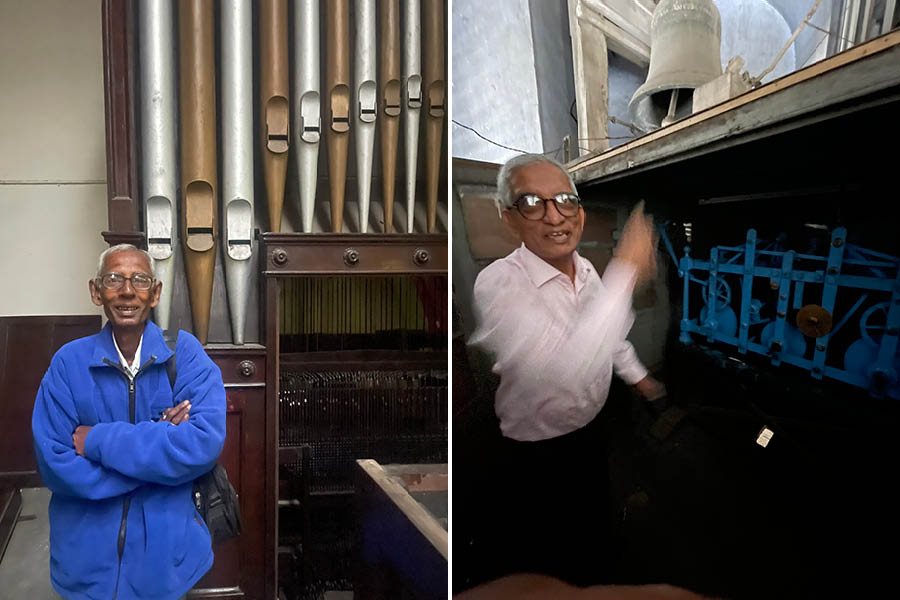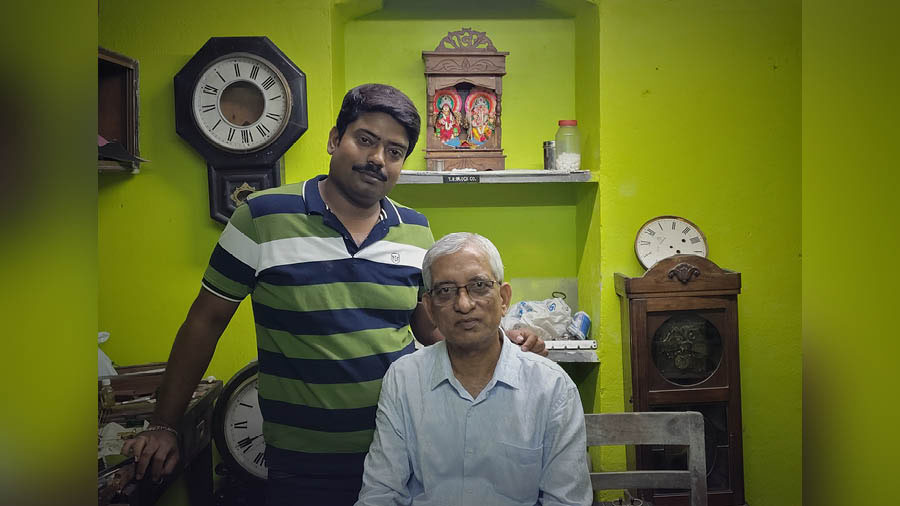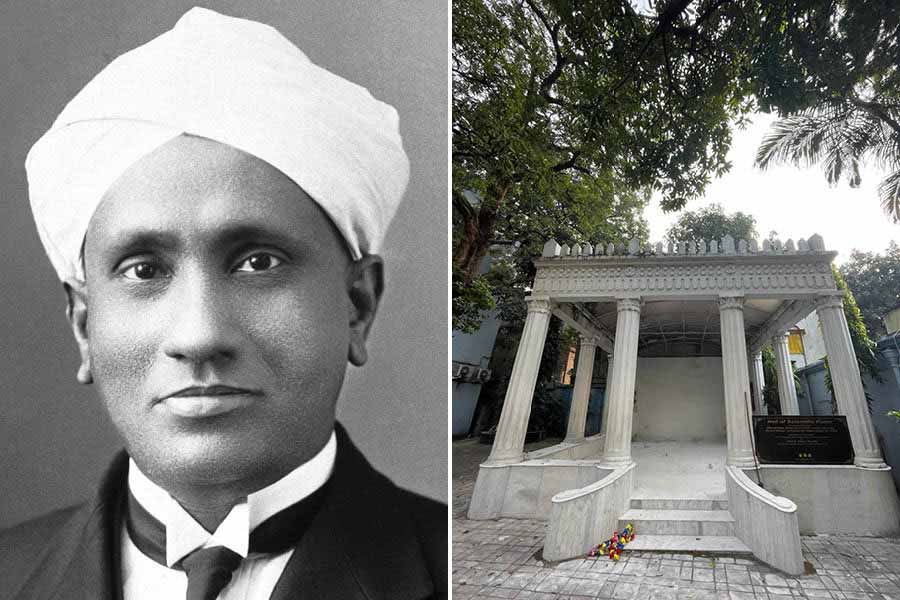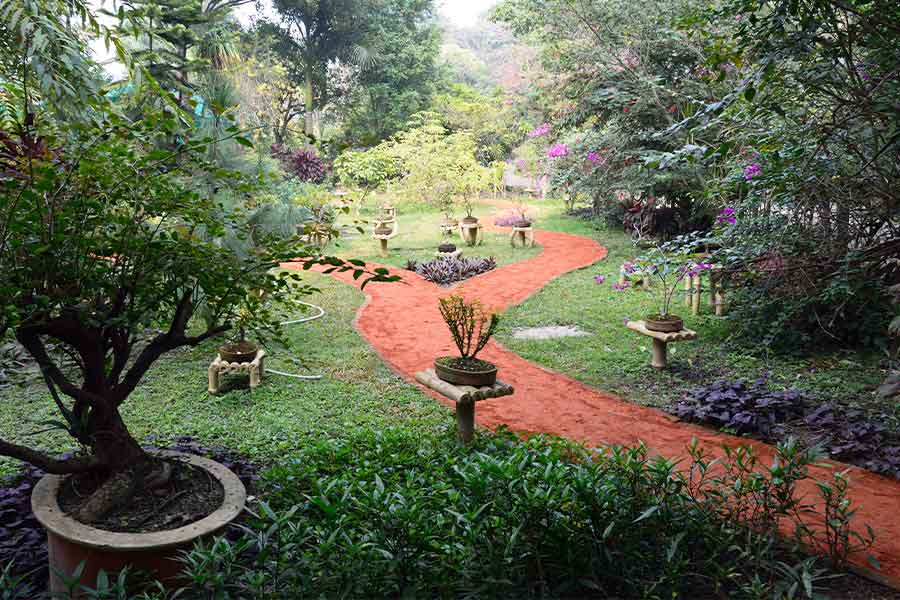This column is dedicated to two individuals – one in his mid-seventies and another in his late sixties – whose names you are unlikely to search on Google. They may never have been feted for any heritage award because they work as invisible people for front-end restorers, but have contributed uniquely to Calcutta’s aural tradition.
Heritage sounds. The two words that represent the theme for this column. The sounds that we have lost across the decades comprise the chime-cum-gong emanating from the church clock extending to the outside and from the organ extending to the inside.
Across the decades, these heritage sounds have virtually disappeared from our consciousness. Clocks were among the first to go, not having been maintained for years; clock parts went progressively missing and retained in some cases — a miracle of sorts — for sentimental value.
I wrote out an aural scorecard across some heritage Kolkata properties.
The 150-year-old New Market chime-cum-gong mechanism has been defunct for more than a decade; any attempt to restore must first address the must-repair condition of the New Market tower in which it is housed, making it a prohibitive exercise.
The Magen (Maghen) David Synagogue on Canning Street has a 19th-century, vintage four-sided clock that shows different times on each; the gong mechanism has not moved an inch for ‘Jabse hum yahan hai tab se’ years (which is the caretaker’s Morse for ‘More for than 50’).
The GPO clock works, but has not been synchronised with the gong, so you have a heritage asset idling passively at the foot of the dome waiting for a restorer.
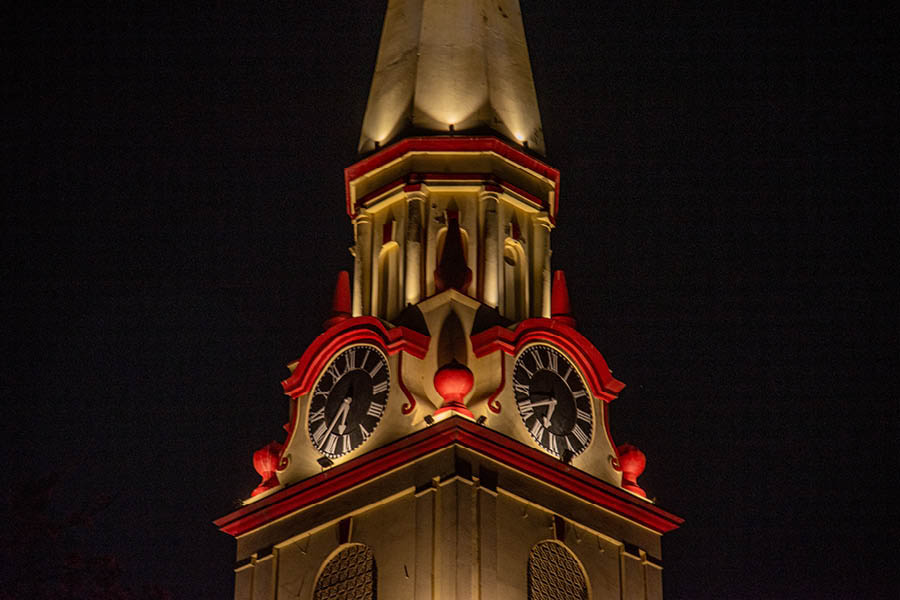
The clock tower of the Sacred Heart Church, which has a gong mechanism that goes back to 1834 Mudar Patherya
The Sacred Heart Church on Dharamtalla Street has a gong mechanism that goes back to 1834. The clock was restored three months ago; the striking mechanism awaits a saviour.
The gong at St James cannot be heard even at a small distance because ‘It is already at peak capacity and any attempt to recalibrate the clock could cause the system to collapse.’
The St Andrews Church (beside Writers’ Buildings) clock and striking mechanism (quarterly and hourly) were restored in February 2024 to full glory with 12-hour striking, wherein the clock strikes once at 1am, twice at 2am, continuing to 12 times at noon.
Now come to the music organs. The one in St James Church is — in the words of the expert — among only two of its kind in the country, but completely defunct and needing to be recreated from scratch. The result is that a Yamaha beat reverberates in a church where the manual organ was once performed. There are other churches where similar multiple-pipe organs have eroded, their pipe hollows have become cosy rat homes and termites have devastated imported wood.
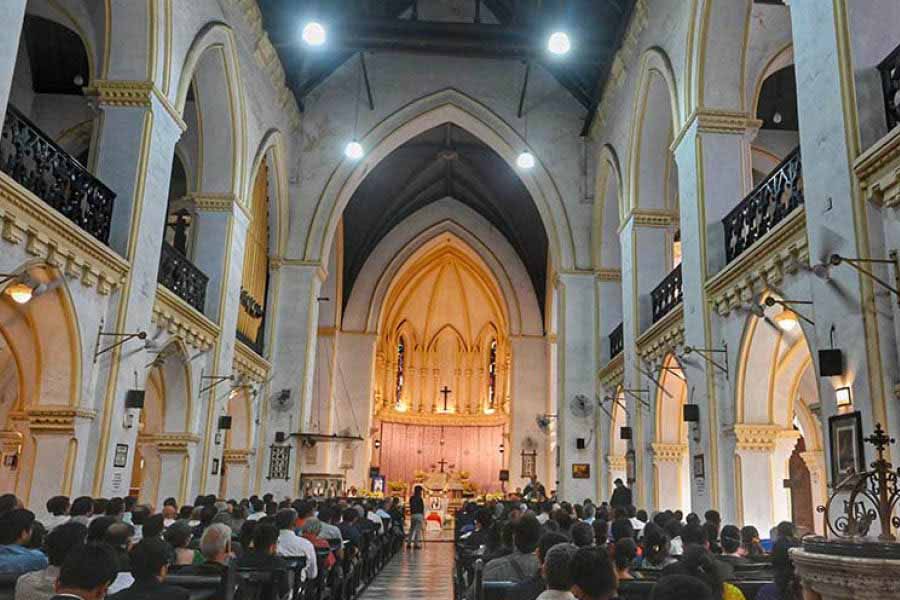
A Yamaha beat reverberates in St James Church, where the manual organ was once performed TT Archives
The big question is why such sounds should at all be important. Sentimental value? Misplaced sense of heritage? Only nostalgia?
There are two answers to this. The church organ when performed in full flow and reverberating in a church setting is one of the most moving sounds in a controlled environment. When the diminutive Japanese in the film Queen (Kangana Ranaut) hears the organ in a Dutch cathedral, he breaks down and weeps for no specific reason. When the gong was revived in St Andrews Church two months ago after years, the first validation came from the policeman on duty. ‘Onek bochhor por, amader childhood-er awaj shunlam!’
This heritage sub-set comes with a multi-century history. The earliest clocks struck the hours, but had no dials to enable the time to be read (the hours could only be heard). China’s water-driven astronomical clockwork technology comprised a celestial globe turned by a water clock mechanism driven by a water wheel; Confucian students were required to write an essay on it to pass Imperial examinations. The clock tower near the Umayyad Mosque in Damascus struck every hour. Dante Alighieri made a reference to the gear works of striking clocks in 1319.

The gong was revived in St Andrews Church two months ago after years Mudar Patherya
The pipe organ is the largest musical instrument (‘King of instruments’ according to Mozart), occasionally reaching five floors with more than 10,000 pipes (Boardwalk Hall Auditorium in Atlantic City has 33,114 pipes). The organ comes down to us in its current form since the 14th century. Along with the clock, it is considered one of the most complex human-made mechanical creations before the Industrial Revolution.
Its distinctive feature is the ability to produce sounds from the softest to the most powerful plein-jeu sonic discharge, which can be sustained in time indefinitely by the organist (the Wanamaker organ in Philadelphia has sonic resources comparable with three simultaneous symphony orchestras). Another interesting feature lies in its intrinsic ‘polyphony’ approach: each set of pipes can be played simultaneously with others, and the sounds mixed in the environment and not in the instrument.
The two Calcutta individuals tweaking and tuning clock parts, striking mechanisms and organ entrails are Swapan Dutta, 76, and Tapan Das, late sixties. They are among our last city links with an old tradition. This then is their story.
Swapan Dutta

Enter the machine — Swapan Dutta Mudar Patherya
“We have been multi-generational clock repairers; if you count my son, who is also engaged in the same profession, then we are five generations. The profession within the family commenced with my great grandfather who worked in Cooke & Kelvey as a much-respected head mistri. Over the generations we have become direct contractors and also the contractor’s sub-contractor, which is why I am known across the country as ‘Ghoriwala Swapanbabu’.
“The profession of the earlier generations was because Calcutta was the capital of the British empire and the grand buildings built by them were embellished with public clocks because people did not carry private watches on their wrists as they do now. The stature of a building would be defined by whether it had a clock or not on its pediment.
“The clock serviced functional and social roles. The functional role we understand because people conducted their daily activity by the clock and its hourly strike; the social role was that people generally turned to look high at the edifice that carried the clock, which made it a point of reference through various day parts, enhancing its respect. Besides, communities grew around structures with clocks, much like how communities grow around the metro rail and expressways these days. The development of mechanical clocks in 12th century Europe was driven by the need to ring bells at canonical hours to call the community to prayer; the earliest mechanical striking clocks in towers in monasteries or public squares helped them reach out to devotees miles away.
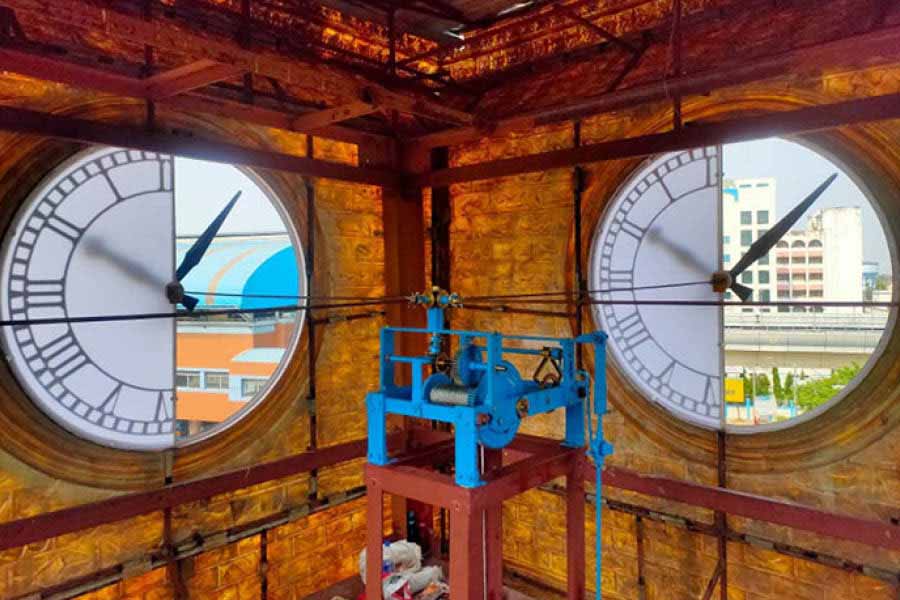
An inside view of the clock tower Swapan Dutta and his son made functional near Karunamoyee bus station. ‘We have been multi-generational clock repairers; if you count my son, who is also engaged in the same profession, then we are five generations,’ he says Satyajit Dutta
“Each of the public clocks that you see in Calcutta has a different personality — the New Market clock chimes every 15 minutes and its tonal quality is of a kind you will seldom hear anywhere else (‘shanghatik maane shanghatik’) and I can only imagine how this must have been boxed and imported from England through choppy seas 150 years ago.
“The BE College system is completely alada. The Metropolitan Building clock is seven feet in height, though it does not appear to be so when seen from the ground level.”
Tapan Das
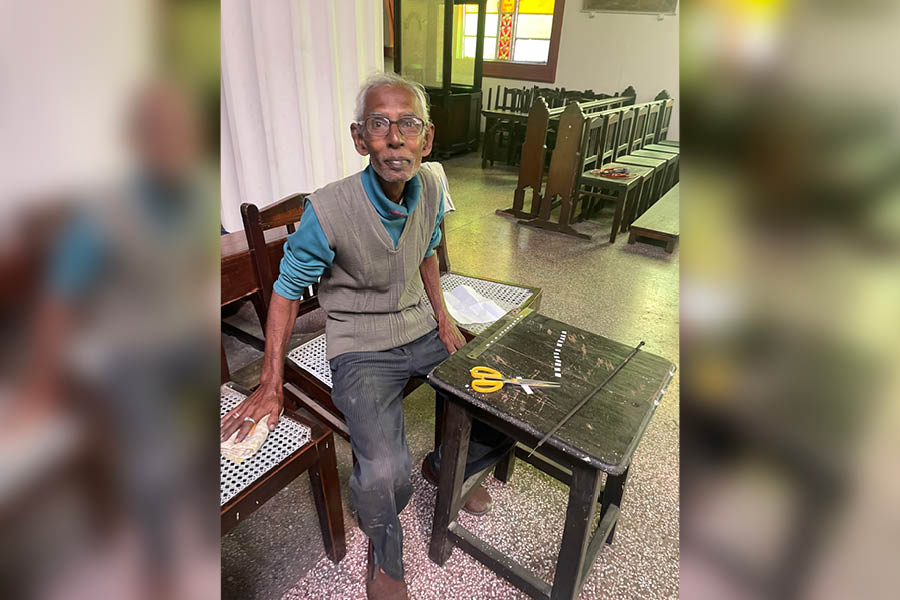
Tapan Das at Sacred Heart Church Mudar Patherya
“My uncle was childless, so kaka’r pashei manush hoyechhi. He repaired music organs and during my school vacations, he would get me to the church. Since I would be sitting around, he would instruct me ‘Eta kor! Ota kor!’ without realising that those errands would one day define my income and existence.
“I could tell you wondrous stories of the organs across the various churches of the city, except that who has the time to listen to them anymore? There are a number of churches with organs comprising tracker action; there are other churches with pneumatic organs. The most remarkable organ of all in Calcutta belonged to St James Church — three layers and one foot — manufactured by William Hill & Sons. All of 1,300 pipes! Compared to that the ones at other churches are like bachchader baaja!
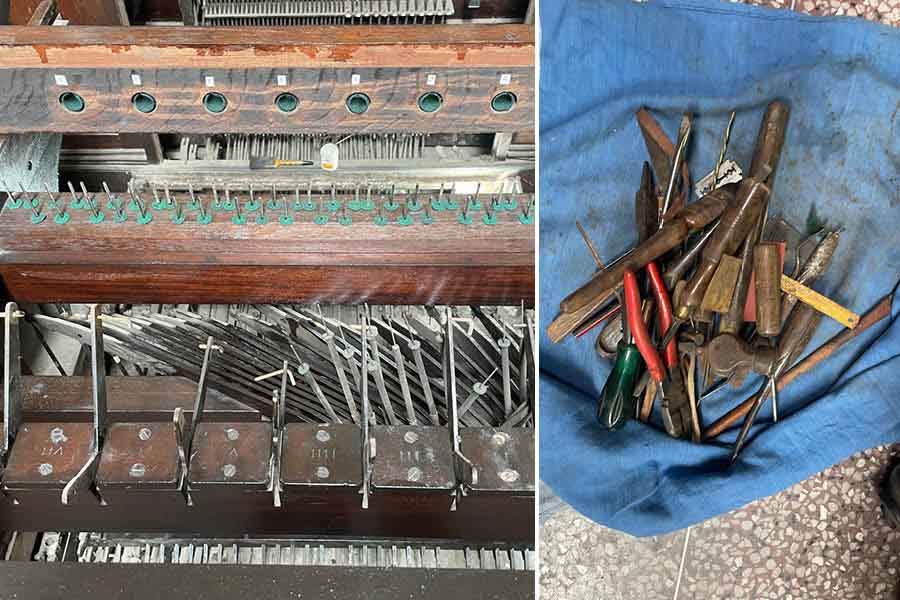
The innards of the organ at Sacred Heart Church and the tools of Tapan Das’s trade Mudar Patherya
“Saar, we have thrown away our heritage. The big organs used to be like thakurdada because they comprised the violin, flute, beagle and piano. Can you believe what such an organ in full flow would sound like! When that organ at St James would be played, the almirah inside the church thor-thor kaanpto! There is an organ with 33,000 pipes somewhere in the world that needs to be performed upon by seven hands and one leg. If all hands are deployed, the sound from that can get a roof to collapse! And remember, all these are mechanical with no electricity. Wonderful, no?
“I helped restore the organ at Sacred Heart Church a couple of months ago. I reopened eight-inch screws after 100 years; some took one hour; some took an entire day. Imagine taking the train from my home in Dakshineswar to come to the church for opening only one screw! There were 200 screws that ranged from 2 inches to 4 inches. I had to take the entire organ apart piece by piece and then put it back piece by piece. But having done so, I can say that we are safe with this organ for the next 50 years.”
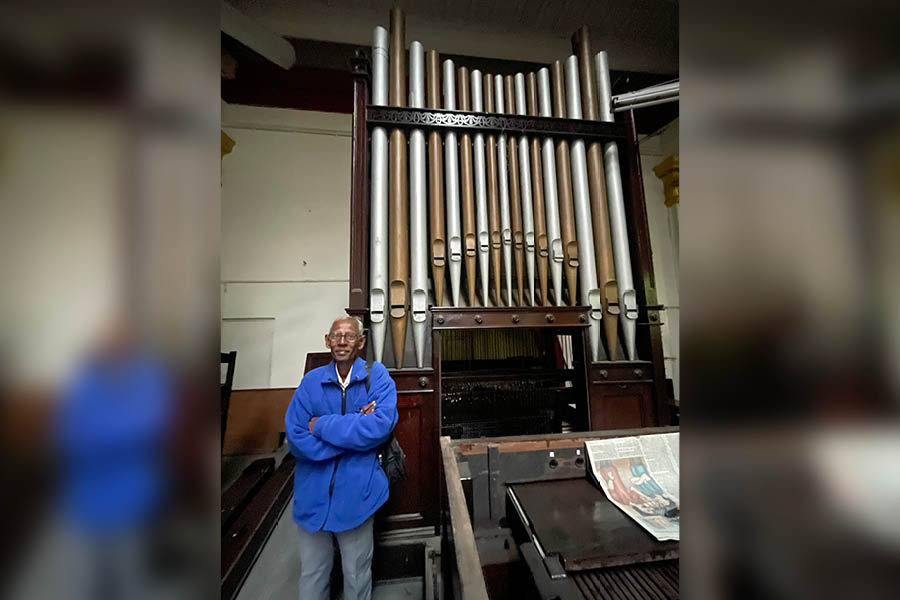
‘I had to take the entire organ apart piece by piece and then put it back piece by piece. But having done so, I can say that we are safe with this organ for the next 50 years’ Mudar Patherya
If there is a bottomline, it is that the striking clocks and the organs need to be saved so that we can hand them to the next generation — and they to their next. Maybe I should start a fundraiser. That gives me work to do before my next column.
